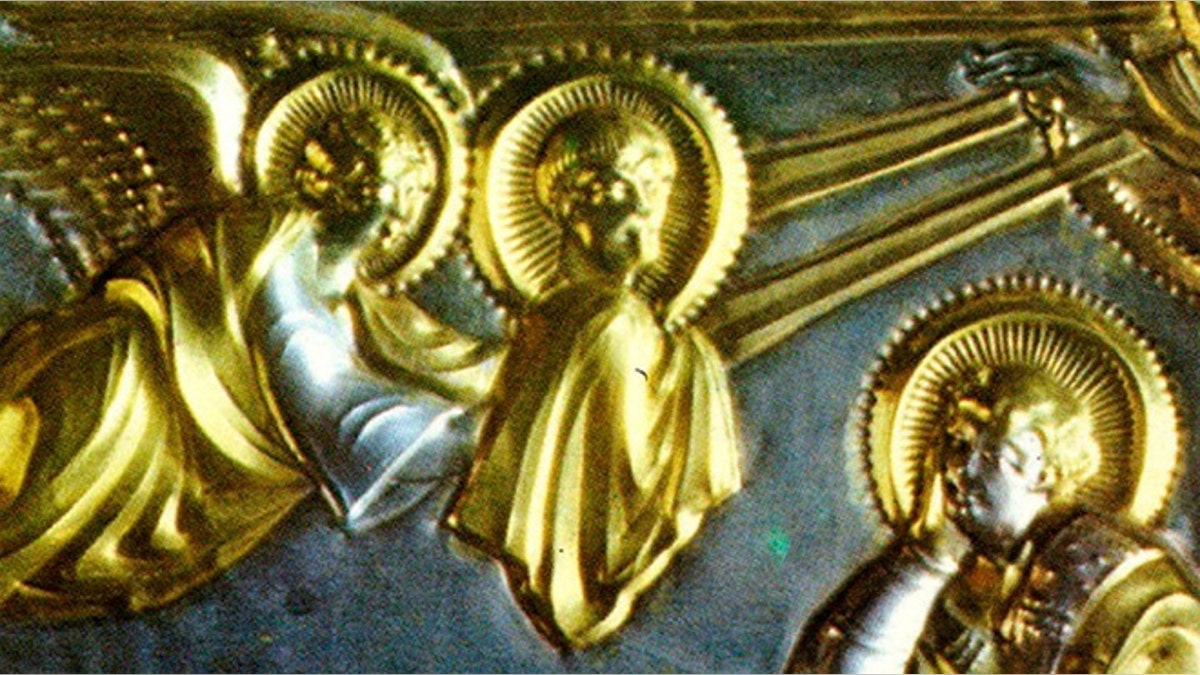
How artisans centuries ago achieved sophisticated gilding, such as on the St. Ambrogio golden altar from 825 AD, is now coming to light. (American Chemical Society)
Over 2,000 years ago, gold and silversmiths developed a variety of techniques, including using mercury like a glue, to apply thin films of metals to statues and other objects.
They developed thin-film coating technology that is unrivalled by today's process for producing DVDs, solar cells, electronic devices and other products and used it on jewels, statues, amulets and more common objects.
Workmen managed to make precious metal coatings as thin and adherent as possible, which not only saved expensive metals but improved resistance to wear caused from continued use and circulation.
Scientists today say understanding these sophisticated metal-plating techniques could help preserve priceless artistic and other treasures from the past.
[pullquote]
In Italy, Gabriel Maria Ingo, senior scientist at the Institute for the Study of Nanostructured Materials of the National Research Council, says that while scientists have made good progress in understanding the chemistry, big gaps in knowledge remain about how gilders in the Dark Ages and other periods applied such lustrous, impressively uniform films of gold or silver to intricate objects.
RELATED: Cutting Edge Science Reveals Ancient Stories
Ingo's team set out to apply the newest analytical techniques to uncover the ancients' artistic secrets. Using surface analytical methods, such as selected area X-ray photoelectron spectroscopy and scanning electron microscopy combined with energy-dispersive spectroscopy on Dark Ages objects such as St. Ambrogios altar from 825 AD, they say that their findings confirm "the high level of competence reached by the artists and craftsmen of these ancient periods who produced objects of an artistic quality that could not be bettered in ancient times and has not yet been reached in modern ones."
In Britain, scientists studying a 400-year-old hoard of jewelry have found that Elizabethan craftsmen developed advanced manufacturing technology that could match that of the 21st century.
The team from Birmingham City University have analyzed the craftwork behind the famous Cheapside Hoard, the world's largest collection of Elizabethan and Jacobean jewelry, discovered in a London cellar in 1912.
Among the historic find, which is being showcased by the Museum of London, is a Ferlite watch that dates back to the 1600s and is so technologically advanced it has been described as the "iPod of its day."
Ann-Marie Carey, a research fellow at Birmingham City University, and her colleagues have used modern technology to discover how these beautiful items were created -- and have been stunned at the advanced technologies used.
"Our forensic analysis has revealed the amazing technologies which craftsman of this period were using, and we fear some of these 400-year-old processes may now be lost to us," she said.
"It is has been a fascinating investigation. We think of our own time as one of impressive technological advances, but we must look at the Elizabethan and Jacobean age as being just as advanced in some ways."
Selected items of the Hoard are set to be revealed to the world at a major exhibition at the Museum of London from this October to next April.
RELATED: See how transportation has changed over 125 years
The university experts combined their own background in craft with CAD-technology to investigate the Hoard in an attempt to discover what kind of manufacturing methods could have been used to create the jewelry, which includes brooches, pendants and delicate gemstone rings.
"When we received photographs of the Hoard we were fascinated with the level of detail in the jewelry," Carey said.
"We wanted to know how such pieces were made and to understand the story behind them. Until now there had been little research into the craftsmanship involved so we feel we are making a unique contribution to the forthcoming exhibition."
Carey, with the help of senior technologist Keith Adcock, have used 21st century digital technologies to recreate pieces from the Hoard, including a 'Pearl Dropper' an egg-shaped item that originally featured ribbons of pearls and was possible worn on as a hairpiece.
The university team has created a bronze version of this item which will be used as part of the exhibition, as well as 'augmented reality' displays of the jewelry items.
"This will create tangible items which will be ideal for visually-impaired visitors who will be handle items directly," Carey added.




















